Yashu Kang
A Strategy Optimized Pix2pix Approach for SAR-to-Optical Image Translation Task
Jul 04, 2022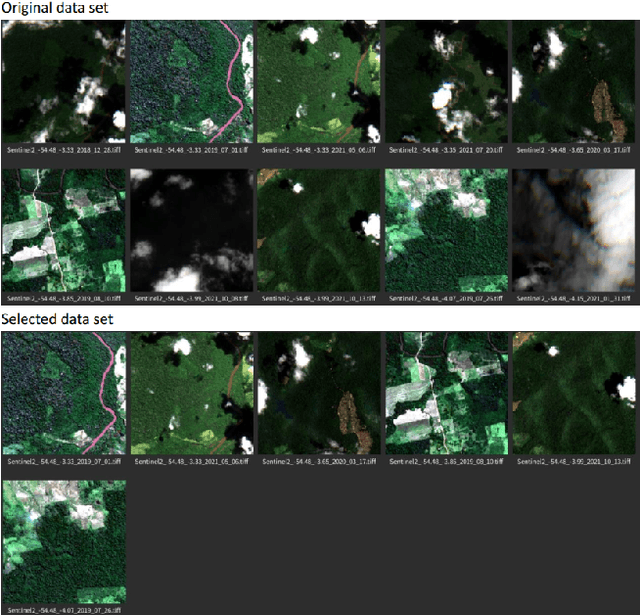
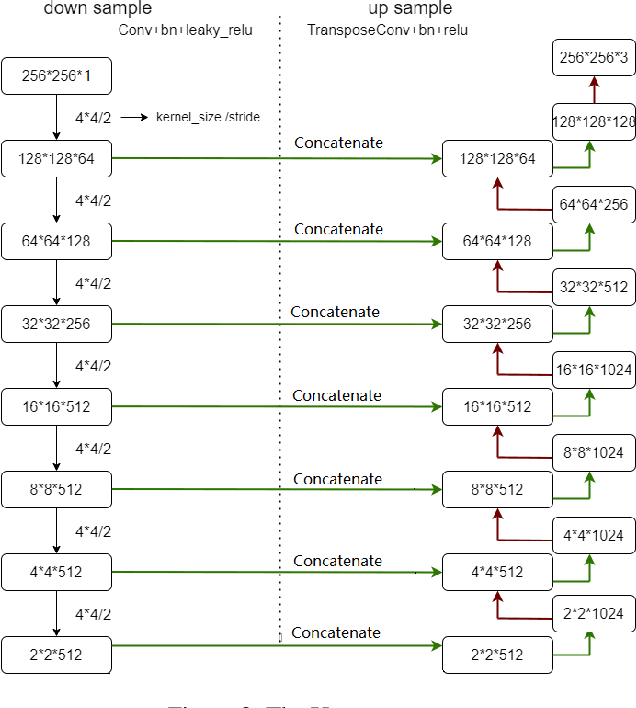


Abstract:This technical report summarizes the analysis and approach on the image-to-image translation task in the Multimodal Learning for Earth and Environment Challenge (MultiEarth 2022). In terms of strategy optimization, cloud classification is utilized to filter optical images with dense cloud coverage to aid the supervised learning alike approach. The commonly used pix2pix framework with a few optimizations is applied to build the model. A weighted combination of mean squared error and mean absolute error is incorporated in the loss function. As for evaluation, peak to signal ratio and structural similarity were both considered in our preliminary analysis. Lastly, our method achieved the second place with a final error score of 0.0412. The results indicate great potential towards SAR-to-optical translation in remote sensing tasks, specifically for the support of long-term environmental monitoring and protection.
Time Gated Convolutional Neural Networks for Crop Classification
Jun 20, 2022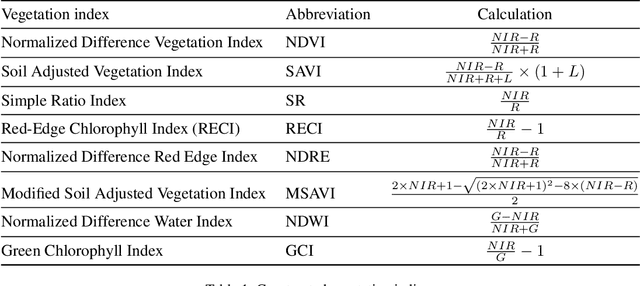
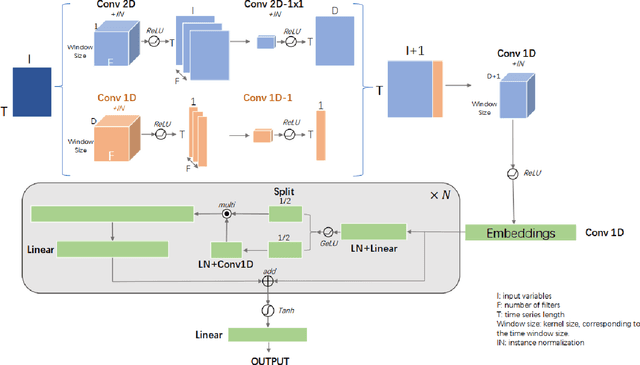
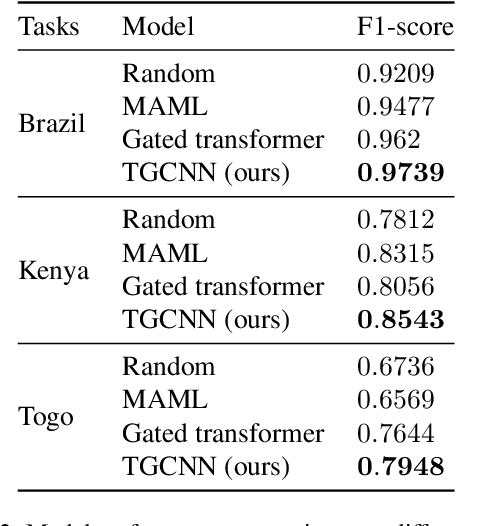
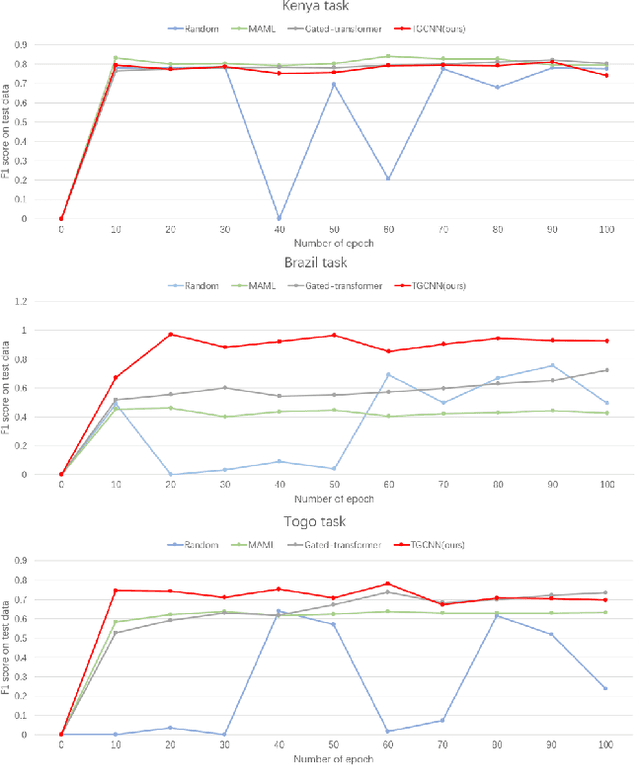
Abstract:This paper presented a state-of-the-art framework, Time Gated Convolutional Neural Network (TGCNN) that takes advantage of temporal information and gating mechanisms for the crop classification problem. Besides, several vegetation indices were constructed to expand dimensions of input data to take advantage of spectral information. Both spatial (channel-wise) and temporal (step-wise) correlation are considered in TGCNN. Specifically, our preliminary analysis indicates that step-wise information is of greater importance in this data set. Lastly, the gating mechanism helps capture high-order relationship. Our TGCNN solution achieves $0.973$ F1 score, $0.977$ AUC ROC and $0.948$ IoU, respectively. In addition, it outperforms three other benchmarks in different local tasks (Kenya, Brazil and Togo). Overall, our experiments demonstrate that TGCNN is advantageous in this earth observation time series classification task.
A Novel Remote Sensing Approach to Recognize and Monitor Red Palm Weevil in Date Palm Trees
Mar 28, 2022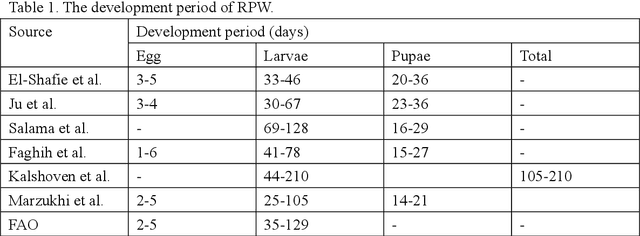
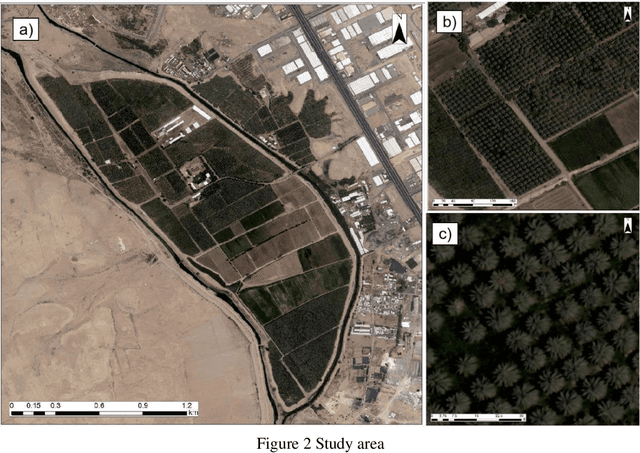
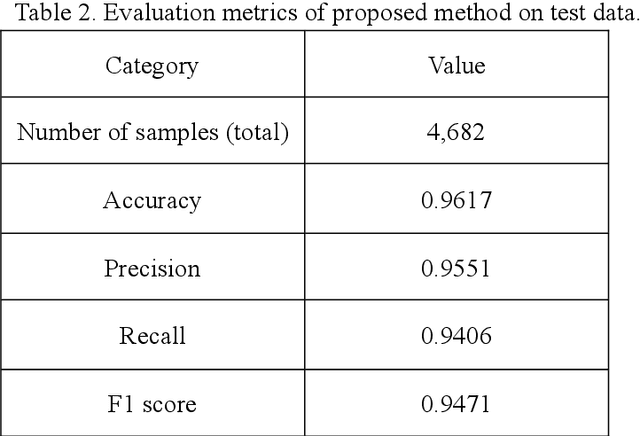
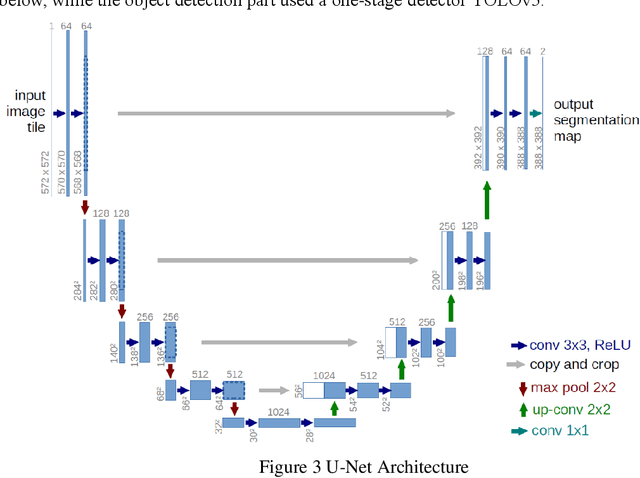
Abstract:The spread of the Red Pal Weevil (RPW) has become an existential threat for palm trees around the world. In the Middle East, RPW is causing wide-spread damage to date palm Phoenix dactylifera L., having both agricultural impacts on the palm production and environmental impacts. Early detection of RPW is very challenging, especially at large scale. This research proposes a novel remote sensing approach to recognize and monitor red palm weevil in date palm trees, using a combination of vegetation indices, object detection and semantic segmentation techniques. The study area consists of date palm trees with three classes, including healthy palms, smallish palms and severely infected palms. This proposed method achieved a promising 0.947 F1 score on test data set. This work paves the way for deploying artificial intelligence approaches to monitor RPW in large-scale as well as provide guidance for practitioners.
 Add to Chrome
Add to Chrome Add to Firefox
Add to Firefox Add to Edge
Add to Edge